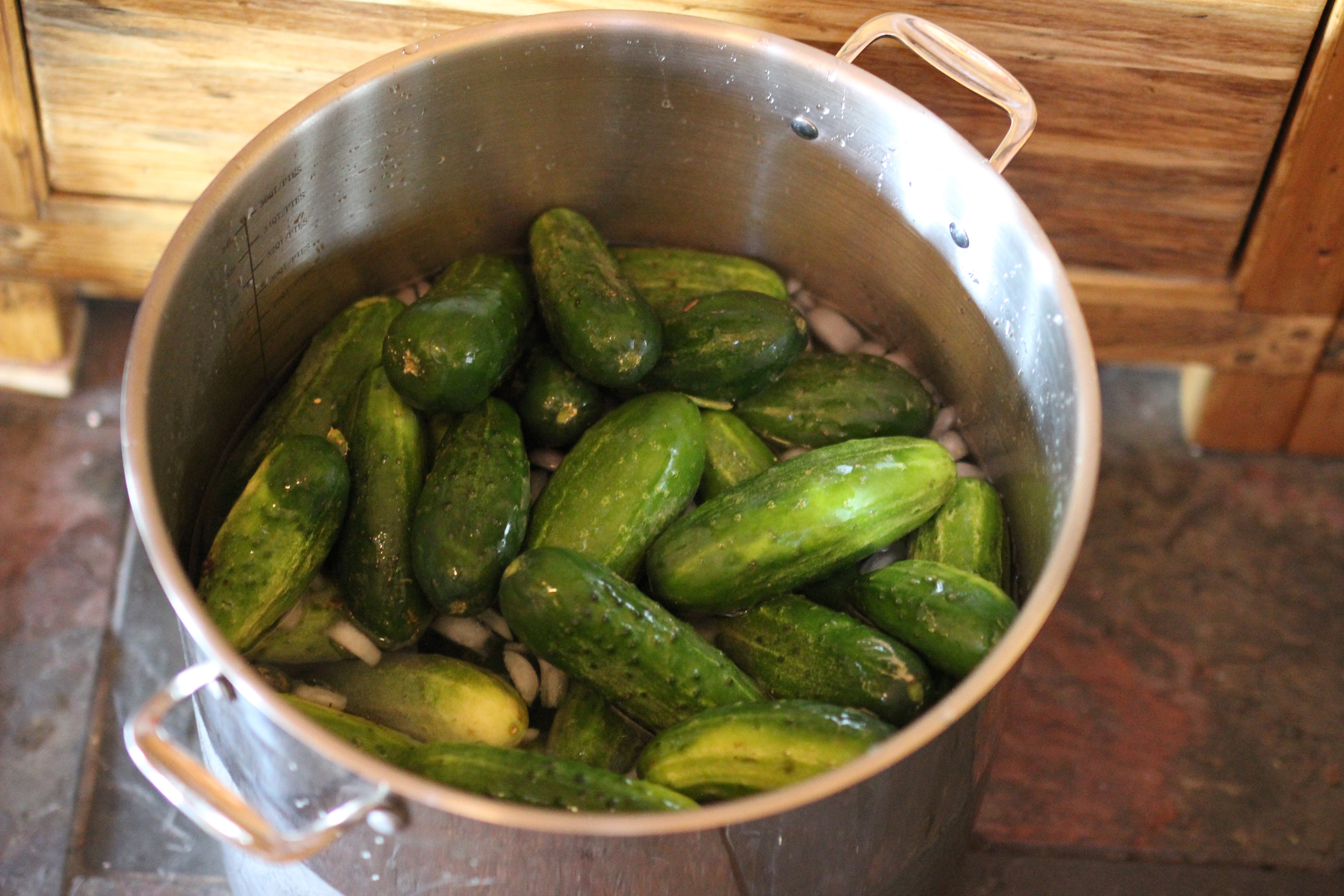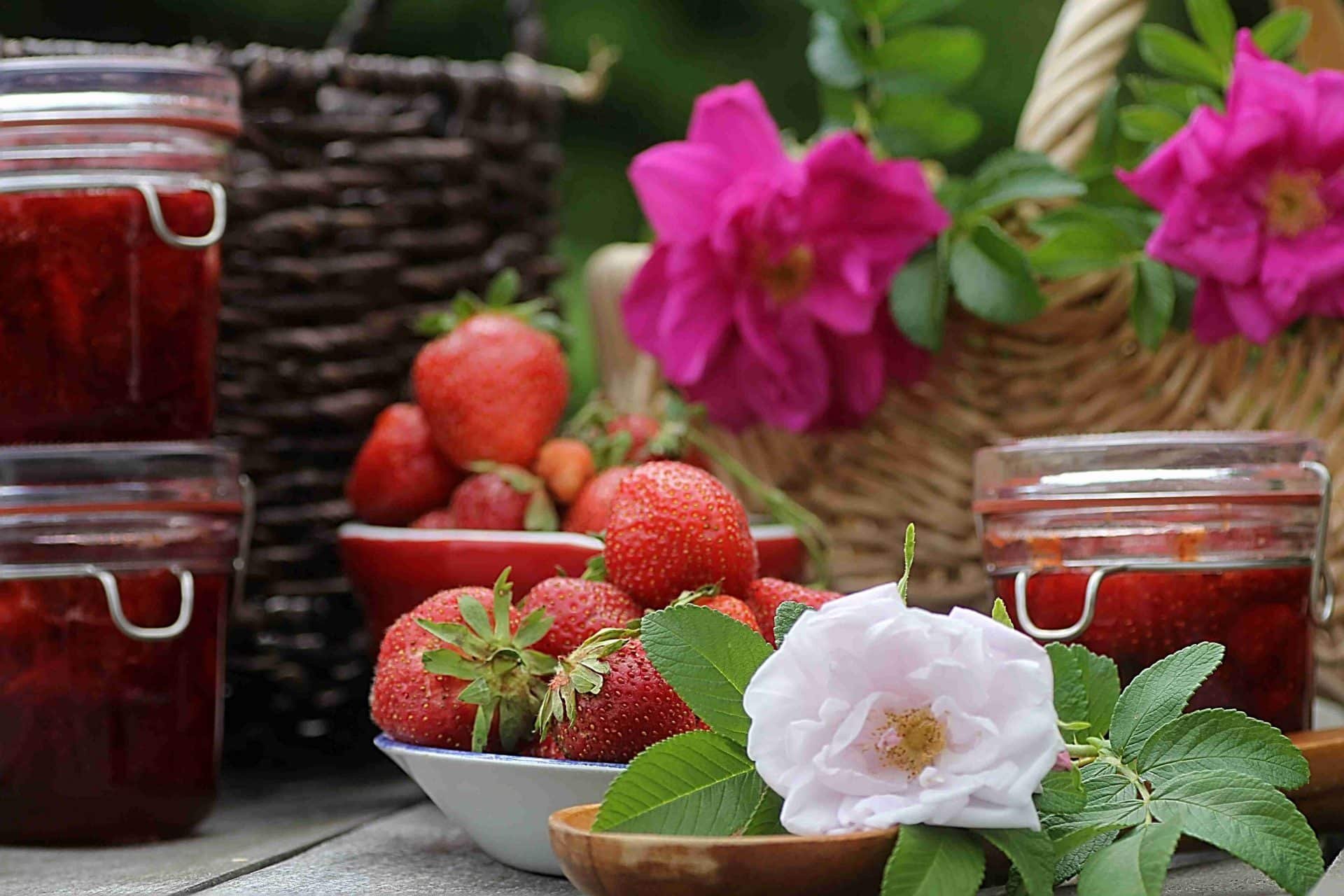
As gardens begin to burst with gorgeous ripe berries, cucumbers and tomatoes canners from around the world eagerly pull our their equipment and get to work creating sumptuous home-made creations.
Here on the homestead we use a wide range of methods to preserve our harvest. We believe in sustainably grown, organic food which is why we put so much effort into producing and preserving as much of our own food as possible.
Canning is not a modern invention. It’s become easier over the years but we have 18th century France to thank for the development of home canning. Since then delicious sweet jams, jellies and juices along with pickled vegetables, salsa, relish, ketchup and so many other delightful things have been lovingly packed into jars and preserved for the winter.
Water bath canning is simply the process of heating, sterilizing and sealing your jars. You can use a water bath to can acidic foods safely making them shelf stable for a year or more.
This generally includes all vinegar based pickled items, including vegetables, salsa and relishes along with sugary items such as jams, jellies, juices and fruits packed in sugary syrups.
Water bath canning is really easy to learn and is often the gateway technique used when entering the big world of preserving food at home.

Be safe & don’t take risks
You should never use the water bath process for low acid food such as meat, fish & plain vegetables. Improper home canning creates the perfect environment to grow botulism bacteria, which can give people serious food poisoning. Low acid food can be safely processed using a pressure canner.
Don’t be deterred by this warning. It might seem intimidating but home canning is perfectly safe when done correctly. Millions of people safely preserve their own food every year. Simply follow the instructions provided in your recipes and you’ll be set.

Here are the essential supplies that we use often when canning our garden harvest.
Water bath canner
The water bath canner comes in a range of sizes. It is a large pot that includes a rack for your jars. You can also use a soup/stock pot and line the bottom with a dish cloth. Don't place jars directly on the bottom of the pot as they can crack.
Steam canner
The steam canner is a more recent creation and has become my favourite choice. A steam canner requires only a fraction of the water and as a result it heats up much faster. This uses a lot less energy/propane and time. Water bath and steam canners are interchangeable with one another when it comes to processing time in a recipe.
Non reactive pot with lid
You will need a non reactive pot such as stainless steel or enamelled cast iron. When selecting a pot it is very important that you avoid using reactive pots such as aluminium or untreated cast iron. Pots made from reactive metals will cause your preserves to have a metallic taste and possible discolouration.
Wooden spoon
A clean wooden spoon preferably one that is only used for making preserves. I keep one tucked away from the normal kitchen spoons just for my preserve making.
Jar lifter
This nifty gadget is really valuable. You are dealing with hot jars when canning and this give you a tight grip on the jars while keeping your hands and wrists well away from the pot
Jar funnel
This will help you fill the jars more easily and reduces spillage and cleaning around the outside of the jars. I have a stainless steel version but you can also get plastic.
Large Ladle
In a pinch you can also use a small measuring jug or anything with a pouring spout.
Food Mill/ Chinos
Used for separating liquids from solids. You can get a simple conical Chinois that is useful when extracting seeds for apple sauce and jellies or go fancier with a multi purpose food mill.
Cheese cloth or Jelly bag
For making jellies you’ll want some cheese cloth or a jelly bag to get a really get a clear liquid.
Most of the supplies used with water bath canning are items you might already have in your kitchen. The rest, don’t cost much and can often be found used on-line. As far as kitchen hobbies go water bath canning is quite economical.
With some helpful equipment and great produce you’ll be on your way to making beautiful jars of jams, jellies and pickles in no time. The next step of course is to learn pressure canning, then you really will be unstoppable.
Recipes
I love creative recipes that showcase the beautiful flavours of all of the fresh produce. It's really important to us that the food we put up is of the best quality. I have a collection of 18 delicious recipes for you to try - all of tested in our homestead kitchen!

If you ever have any questions about canning, drop me a note and I'll be happy to help! Oh and my husband @xwalkran has started steemin' again now that all his summer homestead work is done. Yipee. You know what they say about couples that steem together ... (what is it that people say?) whatever it is I am sure it's good!
He just wrote about 5 great ways to preserve food for winter because there's so many other ways you can empower yourself with a well stocked pantry!
Building a greener, more beautiful world one seed at a time.
Homesteading | Gardening | Frugal Living | Preserving Food| From Scratch
Cooking|
You can also find me at: walkerland.ca |
Facebook
Photo copyright: @walkerland


